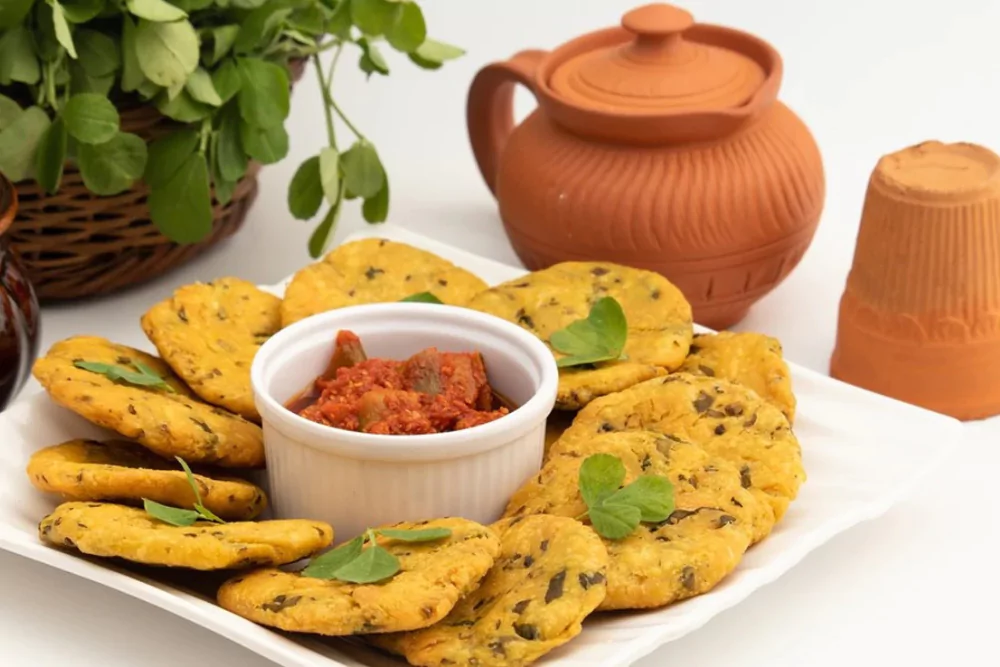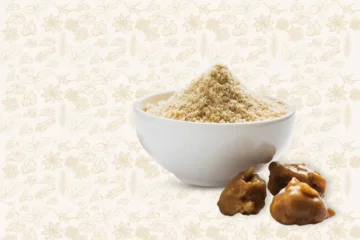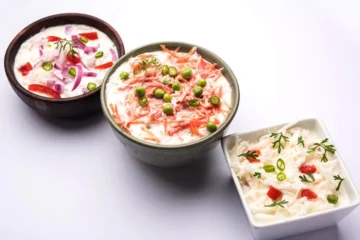Mathri, a popular Indian snack, is cherished for its crispy texture and rich, savory flavor. Adding a touch of hing (asafoetida) to mathri takes its taste to the next level, blending tradition with innovation. This blog will guide you through creating perfectly crispy mathri that delights the palate while maintaining a balance of health and flavor. Let’s explore the magic of hing and its influence on this classic treat!
How does hing enhance the flavor of traditional mathri?
Summary: Hing adds a pungent, savory, and umami flavor to mathri, making it more aromatic and flavorful. It complements other spices, creating a well-rounded taste profile while enhancing the snack’s appeal.
Hing has long been celebrated in Indian cuisine for its ability to add depth to dishes. When used in mathri, hing works wonders in elevating its flavor and aroma:
- Umami Boost: Hing provides a unique umami flavor, enriching the dough with a savory depth that makes every bite memorable.
- Aromatic Appeal: Its strong aroma enhances the overall sensory experience, making the mathri even more inviting.
- Flavor Synergy: Hing pairs seamlessly with other spices like cumin and carom seeds, amplifying the harmonious taste of the mathri.
- Functional Benefits: Beyond taste, hing aids digestion, making it a practical addition to this deep-fried snack.
What are the key steps to make mathri perfectly crispy at home?
Summary: Achieving crispy mathri requires precise steps: using cold water, resting the dough, rolling to an even thickness, and frying at the correct temperature. These methods ensure optimal texture and taste.
Creating perfectly crispy mathri at home is both an art and a science. Follow these steps for flawless results:
- Use Cold Water: Incorporate cold water while kneading the dough. This stiffens the dough, making it ideal for frying and ensuring crispiness.
- Rest the Dough: Allow the dough to rest for 20–30 minutes. This helps in developing flavors and makes the dough easier to handle.
- Roll Evenly: Roll the dough to an even medium thickness. Too thick can lead to undercooked mathri, while too thin may result in over-crispness.
- Score the Dough: Prick the rolled mathri with a fork. This prevents them from puffing up during frying.
- Fry at Low-Medium Heat: Heat oil and fry the mathri on low-medium heat. This ensures even cooking and prevents burning.
- Double-Fry for Extra Crispiness: For added crunch, fry the mathri a second time after cooling slightly.
Can I use gluten-free or healthier alternatives to traditional mathri ingredients?
Summary: Yes, mathri can be made healthier using gluten-free flours, healthier oils, or baked versions. Replace maida with millet flours, and explore non-fried options for a guilt-free snack.
For those seeking to adapt mathri to dietary preferences or create a healthier version, here are some alternative ingredients and methods:
- Gluten-Free Options: Replace maida (refined flour) with gluten-free flours like ragi (finger millet), jowar (sorghum), or bajra (pearl millet) for a wholesome alternative.
- Healthier Oils: Opt for oils like olive oil, avocado oil, or rice bran oil for frying, which offer better nutritional benefits.
- Whole Wheat Flour: Swap maida with whole wheat flour to make a high-fiber version without compromising on flavor.
- Baked Mathri: For a low-fat option, bake the mathri at 180°C (350°F) until golden and crisp instead of frying.
- Natural Seasonings: Use organic and fresh spices to avoid additives and preservatives, ensuring a pure taste.
What is the ideal ratio of hing to other spices in mathri for a balanced flavor?
Summary: The ideal ratio of hing is 1/4 teaspoon for every 2 cups of flour. Balance it with spices like cumin, carom seeds, and black pepper for a harmonious flavor blend.
Achieving the perfect spice ratio ensures hing enhances rather than overpowers the mathri’s flavor. Here is a recommended spice measurement:
| Ingredient | Quantity (for 2 Cups Flour) |
|---|---|
| Hing | 1/4 tsp |
| Cumin Seeds | 1 tsp |
| Carom Seeds | 1 tsp |
| Black Pepper | 1/2 tsp |
- Measure Carefully: Use measuring spoons for precise quantities to avoid flavor imbalance.
- Blend Evenly: Mix the spices uniformly into the dough for consistent flavor in every bite.
- Adjust for Taste: Adjust the quantity of hing slightly based on your personal preferences.
How do I store mathri to retain its crispiness and flavor for a longer time?
Summary: Store mathri in an airtight container at room temperature to retain its crispiness. Avoid moisture, and layer with parchment paper for best results.
Proper storage ensures your mathri remains crunchy and flavorful for days. Here are some effective storage tips:
- Cool Before Storing: Allow the mathri to cool completely before transferring it to containers to avoid moisture buildup.
- Airtight Containers: Use airtight jars or containers to prevent exposure to air and maintain crispiness.
- Layer Carefully: If stacking mathri, place parchment or wax paper between layers to prevent sticking.
- Store in a Dry Place: Keep the container in a cool, dry area, away from sunlight and humidity.
- Avoid Refrigeration: Mathri should not be refrigerated as the cold can alter its texture and make it soft.
- Consume Within 2–3 Weeks: For the best taste and texture, consume mathri within 2–3 weeks of preparation.
Conclusion
Mathri is a timeless Indian snack that brings joy with its crispiness and rich flavor. By adding hing, you can enhance this classic recipe, giving it a unique twist that impresses family and friends alike. Whether you’re experimenting with gluten-free flours, adjusting spice ratios, or perfecting storage methods, this guide ensures every mathri you make is a masterpiece.Try it today and rediscover the joy of homemade mathri!





